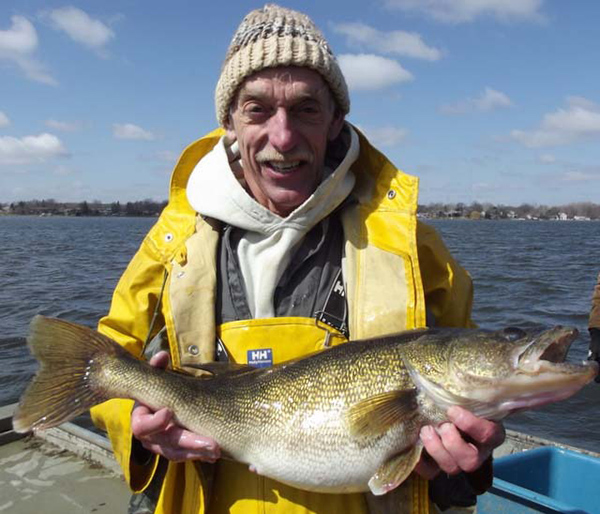By Louie Stout
 Retiring Indiana Biologist Jed Pearson Put Anglers First
Retiring Indiana Biologist Jed Pearson Put Anglers First
Indiana anglers lost a valuable ally last week when District Biologist Jed Pearson called it quits.
Pearson spent 49 years working for the Indiana DNR and 44 of those as a northern Indiana fisheries biologist.
The 68-year-old fish management veteran has been instrumental in several northern Indiana fish successes, none the least of which has been improved bass fisheries and the development of the successful muskie program in Kosciusko County.
However, of all of his accomplishments – of which there were many - he lists his participation in acquiring more than a dozen public access sites on northern Indiana waters as his proudest.
“I always felt that was a priority,” said Pearson. “It was frustrating that we never had the money to go buy land so I was out begging for donations. I never understood why Indiana could have money to build access sites, but couldn’t come up with the money to buy the land. In my eyes, providing public access was one of the most important things we could do as a fisheries agency. It is permanent and not something that is here today and gone tomorrow.”
Dewart Lake’s access was one of the few that the DNR was able to buy the property and build the ramp. An enterprising DNR official in Indianapolis was able to secure some financing to build a good site at Dewart.
“We bought an old marina and was able to put in a pretty good access,” said Pearson. “A lot of these accesses created controversy among lake residents, but once they were built, all that craziness went away.”
Pearson has a history of being relentless, which often put him at odds with DNR officials, and sometimes, friends. He was never one to take no for answer when it came to improving opportunities for anglers.
Especially when it came to public access.
“I grew up on Skinner Lake, and when I helped push through an access there next to a family I knew as a kid, it created some hard feelings,” he said. “If I thought it was the right thing to do, I worked at it until we could get it done.”
Pearson was also a champion of keeping the public informed and produced weekly press releases of interest to anglers for decades. Several of those either appeared in newspapers or provide fodder for bigger feature stories. He has produced hundreds since the 1970s, but the DNR brass made it increasingly difficult in recent years.
“I always thought one of the most important things we could do fish management-wise was tell the public what we were doing in our surveys and what we hoped to accomplish,” he recalled. “But the past few years, it became harder and harder to get things processed and approved by DNR management.”
It’s noticeable, too. The Indiana DNR produces very few Division of Fish and Wildlife press announcements and prohibits its field biologists from talking directly to the media. Meanwhile, it cranks out state park notices almost daily.
Pearson also had a hand in the Sylvan Lake renovation, arguably the most successful lake restoration projects in the state. Once full of carp and avoided by anglers, the lake now has a vibrant bass and walleye fishery that has become a major attraction to Rome City, Ind.
Pearson is equally proud of the way he and other biologists methodically have managed bass populations over the years. Today, northern Indiana waters have more bass per acre than ever before.
He also launched and led the Webster Lake muskie program that has become one of the top muskie lakes in the Midwest. Although it’s been down the past few years, management practices have it coming back and a bright future lies ahead.
Nonetheless, Pearson – like so many Indiana field biologists – became disenchanted with the direction of the state agency.
“We lost our empowerment – our ability to be proactive and productive – to do the job the right way for our constituents,” he said. “Upper-level managers put a clamp on us and everyone is antsy about doing anything controversial. I always felt the fishermen in this state were top priority and we needed to stand up for them, but oftentimes, we (the DNR) just hunkered down. Too many things are micromanaged in Indy.”
Despite all of that, Pearson is proud to have served with other good biologists and the Indiana DNR.
“I was fortunate in that I was able to work a job that I wanted to do ever since I was 12 years old,” said Pearson. “I loved my job, but I guess the frustrations got to this ol’ guy so I’m ready to retire.”
And that friends, is a shame. With him leaves decades of knowledge and a passion to serve Hoosier anglers faithfully, both of which will be missed dearly.


